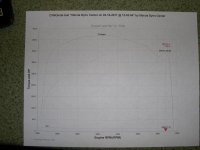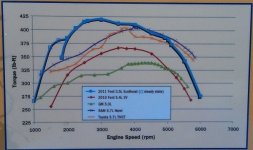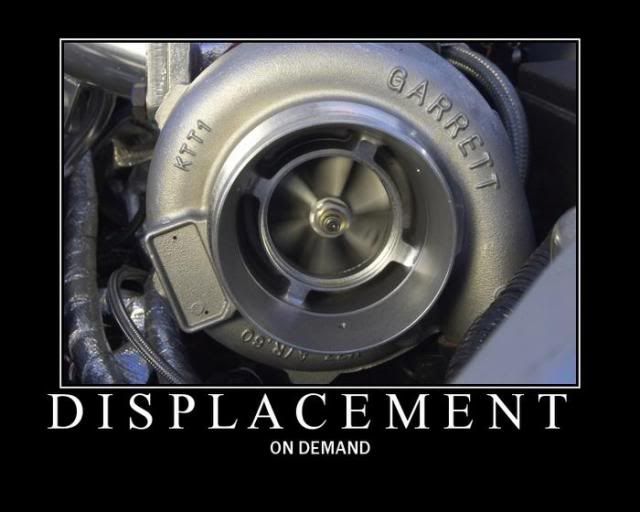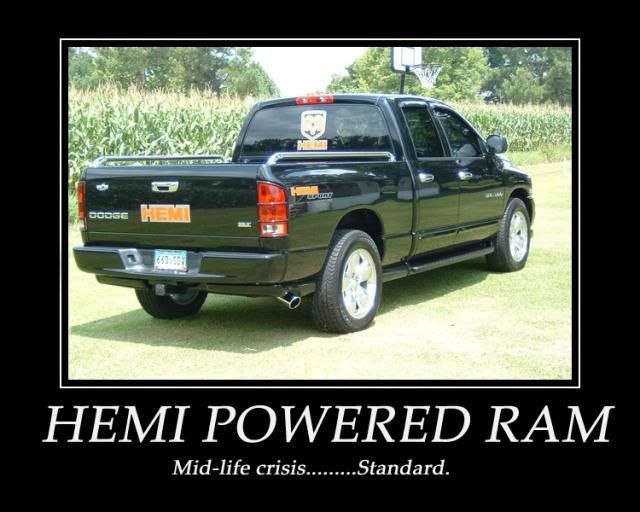It is a desirable design characteristic that is engineered to improve performance for the rare occasion of someone going from idle to WOT. I am willing to bet that this drivetrain spends more time with the torque converter locked than most, if not all, gas engine powertrains offered today.
Desirable? :laughing: Your kidding right?
Who would "desire" to have some trick torque converter constantly trying to make up for the actual lack of power...?
You think Ford made up the low end power claim? That is rediculous! What is your personal experience that has brought you to this conclusion? Real world experiences have backed up the claim.
I firmly believe Ford is padding the actual power output of this engine at low RPMs and they know it's nearly impossible to prove. Real world claims show it equals the old technology V8's but lacks towing fuel mileage and simplicity. If it's not light years ahead of old technology then what's the point?
Remember the quote for the article "Ram's downshift-happy transmission means no data below ~3700 rpm, there's little chance it can touch the Ecoboost at revs below this point -- torque curve breadth is a specialty of turbo gas engines".
Below 3700 rpm is where all of the advantages of the ecoboost shine. I will repost the published torque curves again for you.
Post that dyno sheet all you want, all it proves is the Ecoboost can match V8 power OVER 3,000 RPMs. It
DOES NOT PROVE ANYTHING UNDER 3,000! Again, I have yet to see any real proof of low end power from this engine because I know it's not there. Small displacement turbocharged engines just don't do it. They can not possibly make that power without boost which does not come on that early.
Funny how you found a different dyno that shows stock ENGINE numbers and not Rear Wheel HP. Try using the real one you posted earlier which shows nothing under 3k rpms for either and shows them nearly equal.
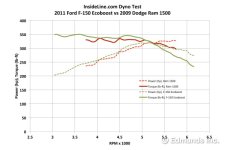
I trust the code was written for some logical reason and for whatever the reason, I like it.
Yes it was and that reason is
NO LOW END GRUNT. If it shifted sooner, the turbos would have to wait for the torque converter to slip and RPMs to climb so the turbos spool again and that lag would cause too much a drop in power.
The 8-speed is, as I stated, another great improvement but only half of the powertrain. Why are you happy with stopping technology on the other half? Just because you have a great transmission shouldn't stop the continued improvement of the engine. I get it, with the exception of the 8-speed transmission, you like simple.
I certainly don't want to stop technology but I question any technology that doesn't make sense. Why go through all this trouble designing this complex system just to get similar results to others? Even compared to their own 5.0l...
If you are to answer one question, please answer: Have you ever towed with an ecoboost truck? I have towed with a Hemi and it performed well and wouldn't steer anyone away from it. Currently I am very impressed with a turbo charged truck engine. What will be the next thing to impress me? I anxiously await.
No I have not towed with one only driven but driven plenty and have seen plenty of test that show it performs very similar to the other offerings. I don't doubt it tows as well as the other V8's but at the cost of so much more that can fail for such little gain. So why take a chance with all this new unproven tech for minimal gains?
Last questions and I highly doubt your answer truthfully as that answer would be against all your trying to sell here.
If the Ecoboost makes so much low end power and torque so early and so flat, Why did they need this active torque converter? Why not put the same basic simple torque converter from the 5.0l and 6.2l? They don't need slipping drivetrains to put the power to the ground...
If this engine replaces the 6.2l, Why is it not in the Super Duty pickups? Is it because that trick rear end can't handle 12k+ loads or constant tow duty?
sld said:
Opinions do not = facts. You have a lot to learn but your ego will keep you from ever getting there.
Feel free to post some facts then, so far the only facts I see prove nothing spectacular here yet the "opinions" of these internet articles seem to be written in gold to the Ford camp...
Fact - Turbo equals great flat mid-range power but lag on low end and lean on top end.
Fact - Supercharger equals great low end and mid-range power but lacking top end.
Fact - There is NO replacement for displacement. You cannot simply replace a large explosion with one half the size but slightly more concentrated.
Opinion - Direct injection will take over Port injection in ALL engines within 15 years or until the take-over of electric engines. Trucks will utilize large displacement direct injection engines over small displacement turbo engines due to simplicity and longevity.
Experience - I built a well-tuned 4 cylinder 2.0l 4G63 Eagle Talon engine over and over again trying every combination of fuel management, turbo sizing, exhaust, ignition, cams, timing, etc... to better my 330ft and 660ft times (true show of power and traction) and nothing worked. UNTIL I built a 2.4l with the exact same setup and gained a TON of low end power that the smaller displacement just couldn't make.

